شانغهاي
| ||||||||||||||||||||||||||||||||||||||||||||||||||||||||||||||||||||||||||||||||||||
| ||||||||||||||||||||||||||||||||||||||||||||||||||||||||||||||||||||||||||||||||||||
شانغهاي (صينية: 上海؛ پنين: Shànghăi�؛ الشانغهائية: Zånhae أصد: [z̻ɑ̃²² hᴇ⁴⁴])، كثيرا ما تُختصر إلى هـُو (الصينية المبسطة: 沪؛ الصينية التقليدية: 滬؛ پنين: Hù�) أو شـِن (صينية: 申؛ پنين: Shēn�)، هي أكبر مدن الـصين من حيث تعداد السكان، وعاصمة البلاد الإقتصادية. إدرايا تعتبر "شانغهاي" إحدى البلديات المركزية الأربع في البلاد (راجع: "التقسيمات الإدارية في الصين"). تقع في وسط ساحل بر الصين وعند مصب نهر اليانگتسي، وتتمتع بموقع بموقع جغرافي متميز جعل منها مرفأ تجاريا مهماّ و إحدى أكبر أقطاب الصناعة في البلاد. In 1991, the ROC government toned down its claims to Shanghai.[9]}} The city is located on the southern estuary of the Yangtze River, with the Huangpu River flowing through it. With a population of 24.89 million اعتبارا من 2021[تحديث], Shanghai is the most populous urban area in China and the most populous city proper in the world. It is the only city in East Asia with a GDP greater than its corresponding capital. As of 2018, the Greater Shanghai metropolitan area, which includes Suzhou, Wuxi, Nantong, Ningbo, Jiaxing, Zhoushan, and Huzhou, was estimated to produce a gross metropolitan product (nominal) of nearly 9.1 trillion RMB ($1.33 trillion).[10] Shanghai has been one of the world's major centers for finance, business and economics, research, education, science and technology, manufacturing, tourism, culture, dining, art, fashion, sports, and transportation, and the Port of Shanghai is the world's busiest container port. In 2019, the Shanghai Pudong International Airport was one of the world's 10 busiest airports by passenger traffic,[11][12] and one of the two international airports serving the Shanghai metropolitan area, the other one being the Shanghai Hongqiao International Airport.
شانغهاي هي مركز رئيسي للشحن والتجارة والادارة، وقد تزايدت أهميتها في القرن 19 بفضل التجارة ومعرفة الأجانب بالموقع المفضل لمينائها وإمكانياته الاقتصادية. وكانت المدينة واحدة من موانئ المعاهدات الخمس اللائي فـُتحن عنوة للتجارة الأجنبية عقب الانتصار البريطاني على الصين في حرب الأفيون الأولى. معاهدة نانكينگ اللاحقة في 1842 ومعاهدة هوامپوا في 1844 سمحتا بتأسيس المستوطنة الدولية والامتياز الفرنسي. وقد ازدهرت المدينة آنئذ كمركز للتجارة بين الصين وباقي العالم (أساساً البلدان الغربية)، وأصبحت المركز المالي الرئيسي لمنطقة آسيا-الهادي في عقد 1930.[13] However, with the Communist Party takeover of the mainland in 1949, trade was limited to socialist countries, and the city's global influence declined. في عقد 1990، أدت الاصلاحات الاقتصادية التي قدمها دنگ شياوپنگ إلى إعادة تطوير مكثفة للمدينة، مما سهل عودة التمويل والاستثمارات الأجنبية إلى المدينة.[14]
By the 1990s, economic reforms introduced by Deng Xiaoping a decade earlier resulted in an intense redevelopment of the city, especially the Pudong New Area, aiding the return of finance and foreign investment. The city has since re-emerged as a hub for international trade and finance; it is the home of the Shanghai Stock Exchange, one of the largest stock exchanges in the world by market capitalization and the Shanghai Free-Trade Zone, the first free-trade zone in mainland China. As of 2020, Shanghai was classified as an Alpha+ (global first-tier) city by the GaWC and ranked as having the 3rd most competitive and largest financial center in the world behind New York City and London by the Global Financial Centres Index.[15] It has the largest metro network of any city in the world, the fifth-highest number of billionaires of any city in the world, the fifth-largest number of skyscrapers of any city in the world, the fifth-largest scientific research output of any city in the world, and highly ranked educational institutions including Fudan, Shanghai Jiao Tong, Tongji, East China Normal, Shanghai, Donghua, Shanghai University of Finance and Economics, East China University of Science and Technology, and University of Shanghai for Science and Technology.[16]
وتوصف شانغهاي بأنها "تحفة" اقتصاد الصين المزدهر. Featuring several architectural styles such as Art Deco and shikumen, the city is renowned for its Lujiazui skyline, museums and historic buildings including the City God Temple, Yu Garden, the China Pavilion and buildings along the Bund, which includes Oriental Pearl TV Tower. Shanghai is also known for its sugary cuisine, distinctive local language and vibrant international flair. As an important international city, Shanghai is the seat of the New Development Bank, a multilateral development bank established by the BRICS states and the city hosts more than 70 foreign representatives and numerous national and international events every year, such as Shanghai Fashion Week, the Chinese Grand Prix and ChinaJoy. Shanghai is the highest earning tourist city in the world,[17] with the seventh most five-star hotels in the world,[18] and the third tallest building in the world, the Shanghai Tower. In 2018, Shanghai hosted the first China International Import Expo (CIIE), the world's first import-themed national-level expo.
. . . . . . . . . . . . . . . . . . . . . . . . . . . . . . . . . . . . . . . . . . . . . . . . . . . . . . . . . . . . . . . . . . . . . . . . . . . . . . . . . . . . . . . . . . . . . . . . . . . . . . . . . . . . . . . . . . . . . . . . . . . . . . . . . . . . . . . . . . . . . . . . . . . . . . . . . . . . . . . . . . . . . . . .
التسمية
The two Chinese characters in the city's name are 上� (shàng/zan, "upon") and 海� (hǎi/hae, "sea"), together meaning "On the Sea". The earliest occurrence of this name dates from the 11th-century Song dynasty, when there was already a river confluence and a town with this name in the area. How the name should be understood has been disputed, but Chinese historians have concluded that during the Tang dynasty, the area of modern-day Shanghai was under the sea level, so the land appeared to be literally "on the sea".[19] Shanghai is officially abbreviated 沪�[أ] (Hù/Vu2) in Chinese, a contraction of 沪渎�[ب] (Hù Dú/Vu Doh, "Harpoon Ditch"), a 4th- or 5th-century Jin name for the mouth of Suzhou Creek when it was the main conduit into the ocean.[22] This character appears on all motor vehicle license plates issued in the municipality today.[23]
أسماء بديلة
申� (Shēn) or 申城� (Shēnchéng, "Shen City") was an early name originating from Lord Chunshen, a 3rd-century BC nobleman and prime minister of the state of Chu, whose fief included modern Shanghai.[22] Shanghai-based sports teams and newspapers often use Shen in their names, such as Shanghai Shenhua and Shen Bao.
华亭�[ت] (Huátíng) was another early name for Shanghai. In AD 751 during the mid-Tang dynasty, Huating County was established by Zhao Juzhen, the governor of Wu Commandery, at modern-day Songjiang, the first county-level administration within modern-day Shanghai. The first five-star hotel in the city was named after Huating.[24]
魔都� (Módū, "المدينة الساحرة"), a contemporary nickname for Shanghai, is widely known among the youth.[25] The name was first mentioned in Shōfu Muramatsu's 1924 novel Mato, which portrayed Shanghai as a dichotomic city where both light and darkness existed.[26]
للمدينة عدة كنى، منها "لؤلؤة الشرق" و "پاريس الشرق".[27][28] وهذا مشابه لـ مدينة هو تشي منه (المعروفة أيضاً باسم سايگون)، في ڤيتنام، which has also been nicknamed as "Paris of the Orient", due to Vietnam's historical French status.[29]
السكان
بلغ عدد السكان في شانغهاي الكبرى 31.300.000 نسمة عام 2003 م - حوالي 16.500.000 نسمة بدون عد سكان الضواحي - ، يتجمع هذا التعداد في مساحة لا تتجاور 82.000 كم² (الكثافة السكانية 2588 ن/كم2). وتتواجد في المدينة فيها أكثر من 4500 ناطحة سحاب، يبلغ ارتفاع أعلاها الـ488 مترا.
التاريخ
 مقالة مفصلة: تاريخ شانغهاي
مقالة مفصلة: تاريخ شانغهاي
Shang Kingdom (c. 1600–c. 1046 BC)
Zhou Kingdom (c. 1046–221 BC), Kingdom of Shu (?–c. 316 BC), State of Ba (?–316 BC), State of Wu (12th century BC–473 BC)
Spring and Autumn period (771 BC-473 BC)
Divided in الدويلات المتناحرة (475 ق.م.-221 ق.م.)
Qin Empire (221 BC-206 ق.م.)
Kingdom of Nanyue (204 BC–111 BC) (conquered by Han)
Dian Kingdom (279 BCE–109 BCE) (conquered by Han)
Great Yuan Empire (1271–1368)
Great Ming Empire (1368–1644)
القِدم
The western part of modern-day Shanghai was inhabited 6000 years ago.[30] During the Spring and Autumn period (approximately 771 to 476 BC), it belonged to the Kingdom of Wu, which was conquered by the Kingdom of Yue, which in turn was conquered by the Kingdom of Chu.[31] During the Warring States period (475 BC), Shanghai was part of the fief of Lord Chunshen of Chu, one of the Four Lords of the Warring States. He ordered the excavation of the Huangpu River. Its former or poetic name, the Chunshen River, gave Shanghai its nickname of "Shēn".[31] Fishermen living in the Shanghai area then created a fish tool called the hù, which lent its name to the outlet of Suzhou Creek north of the Old City and became a common nickname and abbreviation for the city.[32]
الامبريالية

During the Tang and Song dynasties, Qinglong Town (青龙镇[ث]) in modern Qingpu District was a major trading port. Established in 746 (the fifth year of the Tang Tianbao era), it developed into what historically called a "giant town of the Southeast", with thirteen temples and seven pagodas. Mi Fu, a scholar and artist of the Song dynasty, served as its mayor. The port experienced thriving trade with provinces along the Yangtze and the Chinese coast, as well as with foreign countries such as Japan and Silla.[33]
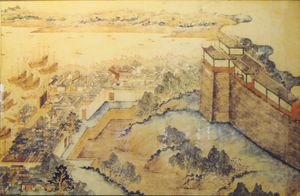
By the end of the Song dynasty, the center of trading had moved downstream of the Wusong River to Shanghai.[34] It was upgraded in status from a village to a market town in 1074, and in 1172, a second sea wall was built to stabilize the ocean coastline, supplementing an earlier dike.[35] From the Yuan dynasty in 1292 until Shanghai officially became a municipality in 1927, central Shanghai was administered as a county under Songjiang Prefecture, which had its seat in the present-day Songjiang District.[36]
Two important events helped promote Shanghai's developments in the Ming dynasty. A city wall was built for the first time in 1554 to protect the town from raids by Japanese pirates. It measured 10 m (33 ft) high and 5 km (3 mi) in circumference.[37] A City God Temple was built in 1602 during the Wanli reign. This honor was usually reserved for prefectural capitals and not normally given to a mere county seat such as Shanghai. Scholars have theorized that this likely reflected the town's economic importance, as opposed to its low political status.[37]
During the Qing dynasty, Shanghai became one of the most important sea ports in the Yangtze Delta region as a result of two important central government policy changes: in 1684, the Kangxi Emperor reversed the Ming dynasty prohibition on oceangoing vessels—a ban that had been in force since 1525; and in 1732, the Qianlong Emperor moved the customs office for Jiangsu province (江海关;[ج] see Customs House, Shanghai) from the prefectural capital of Songjiang to Shanghai, and gave Shanghai exclusive control over customs collections for Jiangsu's foreign trade. As a result of these two critical decisions, Shanghai became the major trade port for all of the lower Yangtze region by 1735, despite still being at the lowest administrative level in the political hierarchy.[38]
. . . . . . . . . . . . . . . . . . . . . . . . . . . . . . . . . . . . . . . . . . . . . . . . . . . . . . . . . . . . . . . . . . . . . . . . . . . . . . . . . . . . . . . . . . . . . . . . . . . . . . . . . . . . . . . . . . . . . . . . . . . . . . . . . . . . . . . . . . . . . . . . . . . . . . . . . . . . . . . . . . . . . . . .
الصعود والعصر الذهبي
In the 19th century, international attention to Shanghai grew due to European recognition of its economic and trade potential at the Yangtze. During the First Opium War (1839–1842), British forces occupied the city.[39] The war ended in 1842 with the Treaty of Nanking, which opened Shanghai as one of the five treaty ports for international trade.[40] The Treaty of the Bogue, the Treaty of Wanghia, and the Treaty of Whampoa (signed in 1843, 1844, and 1844, respectively) forced Chinese concession to European and American desires for visitation and trade on Chinese soil. Britain, France, and the United States all established a presence outside the walled city of Shanghai, which remained under the direct administration of the Chinese.[41]
The Chinese-held Old City of Shanghai fell to rebels from the Small Swords Society in 1853, but was recovered by the Qing government in February 1855.[42] In 1854, the Shanghai Municipal Council was created to manage the foreign settlements. Between 1860 and 1862, the Taiping rebels twice attacked Shanghai and destroyed the city's eastern and southern suburbs, but failed to take the city.[43] In 1863, the British settlement to the south of Suzhou Creek (northern Huangpu District) and the American settlement to the north (southern Hongkou District) joined in order to form the Shanghai International Settlement. The French opted out of the Shanghai Municipal Council and maintained its own concession to the south and southwest.[44]
The First Sino-Japanese War concluded with the 1895 Treaty of Shimonoseki, which elevated Japan to become another foreign power in Shanghai. Japan built the first factories in Shanghai, which was soon copied by other foreign powers. All this international activity gave Shanghai the nickname "the Great Athens of China".[45] In 1914, the Old City walls were dismantled because they blocked the city's expansion. In July 1921, the Chinese Communist Party was founded in the French Concession.[41] On 30 May 1925, the May Thirtieth Movement broke out when a worker in a Japanese-owned cotton mill was shot and killed by a Japanese foreman.[46] Workers in the city then launched general strikes against imperialism, which became nationwide protests that gave rise to Chinese nationalism.[47]
The golden age of Shanghai began with its elevation to municipality after it was separated from Jiangsu on 7 July 1927.[41][48] This new Chinese municipality covered an area of 494.69 km2 (191.0 sq mi), including the modern-day districts of Baoshan, Yangpu, Zhabei, Nanshi, and Pudong, but excluded the foreign concessions territories.[48] Headed by a Chinese mayor and municipal council, the new city government's first task—the Greater Shanghai Plan—was to create a new city center in Jiangwan town of Yangpu district, outside the boundaries of the foreign concessions. The plan included a public museum, library, sports stadium, and city hall, which were partially constructed before being interrupted by the Japanese invasion.[49]
The city flourished, becoming a primary commercial and financial hub of the Asia-Pacific region in the 1930s.[13] During the ensuing decades, citizens of many countries and all continents came to Shanghai to live and work; those who stayed for long periods—some for generations—called themselves "Shanghailanders".[50] In the 1920s and 1930s, almost 20,000 White Russians fled the newly established Soviet Union to reside in Shanghai.[51] These Shanghai Russians constituted the second-largest foreign community. By 1932, Shanghai had become the world's fifth largest city and home to 70,000 foreigners.[52] In the 1930s, some 30,000 Jewish refugees from Europe arrived in the city.[53]
Shanghai filmed in 1937
The Bund in the late 1920s seen from the French Concession
Nanking Road (modern-day East Nanjing Road) in the 1930s
Shanghai Park Hotel was the tallest building in Asia for decades
Former Shanghai Library
The HSBC Building built in 1923 and the Customs House built in 1927
الغزو الياباني

On 28 January 1932, Japanese forces invaded Shanghai while the Chinese resisted. More than 10,000 shops and hundreds of factories and public buildings[54] were destroyed, leaving Zhabei district ruined. About 18,000 civilians were either killed, injured, or declared missing.[41] A ceasefire was brokered on 5 May.[55] In 1937, the Battle of Shanghai resulted in the occupation of the Chinese-administered parts of Shanghai outside of the International Settlement and the French Concession. People who stayed in the occupied city suffered on a daily basis, experiencing hunger, oppression, or death.[56] The foreign concessions were ultimately occupied by the Japanese on 8 December 1941 and remained occupied until Japan's surrender in 1945; multiple war crimes were committed during that time.[57]
A side-effect of the Japanese invasion of Shanghai was the Shanghai Ghetto. Japanese consul to كاوناس، لتوانيا, Chiune Sugihara issued thousands of visas to Jewish refugees who were escaping the Nazi's Final Solution to the Jewish Question. They traveled from Keidan, Lithuania across Russia by railroad to the Vladivostok from where they traveled by ship to Kobe, Japan. Their stay in Kobe was short as the Japanese government transferred them to Shanghai by November 1941. Other Jewish refugees found haven in Shanghai, not through Sugihara, but came on ships from Italy. The refugees from Europe were interned into a cramped ghetto in the Hongkou District,[58] and after the Japanese attack on Pearl Harbor, even the Iraqi Jews who had been living in Shanghai from before the outbreak of WWII were interned. Among the refugees in the Shanghai Ghetto was the Mirrer Yeshiva, including its students and faculty. On 3 September 1945, the Chinese Army liberated the Ghetto and most of the Jews left over the next few years. By 1957, there were only one hundred Jews remaining in Shanghai.
On 27 May 1949, the People's Liberation Army took control of Shanghai through the Shanghai Campaign. Under the new People's Republic of China (PRC), Shanghai was one of only three municipalities not merged into neighboring provinces (the others being Beijing and Tianjin).[59] Most foreign firms moved their offices from Shanghai to Hong Kong, as part of a foreign divestment due to the PRC's victory.[60]
الحداثة
After the war, Shanghai's economy was restored—from 1949 to 1952, the city's agricultural and industrial output increased by 51.5% and 94.2%, respectively.[41] There were 20 urban districts and 10 suburbs at the time.[61] On 17 January 1958, Jiading, Baoshan, and Shanghai County in Jiangsu became part of Shanghai Municipality, which expanded to 863 km2 (333.2 sq mi). The following December, the land area of Shanghai was further expanded to 5,910 km2 (2,281.9 sq mi) after more surrounding suburban areas in Jiangsu were added: Chongming, Jinshan, Qingpu, Fengxian, Chuansha, and Nanhui.[62] In 1964, the city's administrative divisions were rearranged to 10 urban districts and 10 counties.[61]
As the industrial center of China with the most skilled industrial workers, Shanghai became a center for radical leftism during the 1950s and 1960s. The radical leftist Jiang Qing and her three allies, together the Gang of Four, were based in the city.[63] During the Cultural Revolution (1966–1976), Shanghai's society was severely damaged, with 310,000 wrongful convictions involving more than 1 million people. About 11,500 people were unjustly persecuted to death. Yet, even during the most tumultuous times of the revolution, Shanghai was able to maintain economic production with positive annual growth rate.[41] The Shanghai People's Commune was established in the city during the January Storm of 1967.
Since 1949, Shanghai has been a comparatively heavy contributor of tax revenue to the central government; in 1983, the city's contribution in tax revenue was greater than investment received in the past 33 years combined.[64] Its importance to the fiscal well-being of the central government also denied it from economic liberalizations begun in 1978. In 1990, Deng Xiaoping finally permitted Shanghai to initiate economic reforms, which reintroduced foreign capital to the city and developed the Pudong district, resulting in the birth of Lujiazui.[65] As of 2020, Shanghai is classified as an Alpha+ city by the Globalization and World Cities Research Network, making it one of the world's Top 10 major cities.[66]
. . . . . . . . . . . . . . . . . . . . . . . . . . . . . . . . . . . . . . . . . . . . . . . . . . . . . . . . . . . . . . . . . . . . . . . . . . . . . . . . . . . . . . . . . . . . . . . . . . . . . . . . . . . . . . . . . . . . . . . . . . . . . . . . . . . . . . . . . . . . . . . . . . . . . . . . . . . . . . . . . . . . . . . .
الهيمنة الأجنبية
أسست القرية الصغيرة في القرن الـ11 م، وغلب عليها نشاطالصيد البحري، حتى القرن الـ18 م لم يكن لها شأن يذكر في تاريخ البلاد. عام 1842 م وبعد إتفاقية نانكي، بدأت المدينة عهدا جديد مع انفتاحها على التجارة الخارجية.
وضعت الإتفاقية الموقعة حدا لحروب الأفيون (راجع: حرب الأفيون الأولى، ثم الثانية) بين بريطانيا والـصين، أصبحت "شانغهاي" منطقة امتيازات بريطانية. ثم تحصلت دول أخرى كـ"فرنسا" والولايات المتحدة على امتيازات مماثلة في المدينة.
شجع هذا المناخ العديد من البنوك والشركات التجارة العالمية على الاستقرار في هذه المنطقة الخاصة. كانت هذه المناطق تقع تحت الإدارة الغربية. عام 1857 م حصلت بريطانيا على حق الإبحار في نهر "يانغتسي"، عرفت التجارة في شانغهاي ازدهارا حقيقيا، وأصيح ميناءها من أنشط الموانىء في الصين. كانت تمر عبره ربع (1/4) التجارة البحرية الصينية. تدفقت الأصول الأجنبية على الصناعة المحلية، كانت اليد العاملة الرخيصة والوفيرة من أهم الأسباب في ذلك.
السيادة الصينية
كان الصينيون تواقون للتخلص من الهيمنة الأجنية على المدينة. عرفت "شانغهاي" نشاطات سياسية مكثقة، عقد فيها أول مؤتمر للحزب الشيوعي الصيني (1921 م). عام 1927 م قامت الجيوش الوطنية بقيادة "جيانگ جيشي" بالإستيلاء على المدينة ، وتم وضعها تحت إدراة حكومة "گيومندانگ" (أول حكومة وطنية بعد اسقاط حكم سلالة "تشنغ" سنة 1911 م)، قام هؤلاء بحملة لطرد الشيوعيين من المدينة.
وقعت تحت الإحتلال الياباني مابين 1937-1945 م، ثم استرجعتها الـصين بعد نهاية الحرب العالمية الثانية. تخلت كل من بريطانيا، فرنسا والولايات المتحدة عن إمتيازاتها في المدينة. قامت القوات الشيوعية بالإستيلاء عليها (1949 م).
الإنطلاقة الجديدة
بعد مرحلة من الركود، عرفت "شانغهاي" ومنذ الخمسينيات (من القرن الـ20 م) حيوية جديدة أعادت إليها دورها الريادي. شاركت المدينة في "الثورة الثقافية الصينية" وأصبح للجيش الدور المهيمن على الاقتصاد والسياسة فيها. أعيدت تنصيب حكومة مدنية عام 1979 م. شرع في اصلاحات اقتصادية (سنوات الثمانينات) وزاد بفضلها الإنتاج الصناعي، ثم ومنذ 1990 م أطلقت الحكومة المركزية يد الحكومة المحلية في تطوير المدينة وجلب المزيد من الإستثمارات إليها (للحد من هيمنة هونغ كونغ على المنطقة) . تم اشروع في بناء المنشآت المدنية الحديثة (طرق سريعة، جسور، قطار الأنفاق( مترو) وأحياء ) للدفع بعملية التنمية فيها.
الجغرافيا
 مقالة مفصلة: جغرافية شانغهاي
مقالة مفصلة: جغرافية شانغهاي

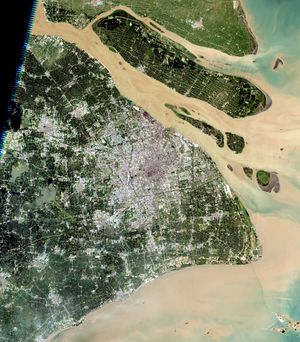
تقع في الطرف الجنوبي من الخليج الذي يصب فيه نهر اليانگتسي Yangtze في المحيط الهادئ، قرب خط العرض 30 شمال.
المناخ
| بيانات مناخ شنغهاي (1971–2000) | |||||||||||||
|---|---|---|---|---|---|---|---|---|---|---|---|---|---|
| الشهر | يناير | فبراير | مارس | أبريل | مايو | يونيو | يوليو | أغسطس | سبتمبر | اكتوبر | نوفمبر | ديسمبر | العام |
| العظمى المتوسطة °س (°ف) | 8.1 (46.6) |
9.2 (48.6) |
12.8 (55) |
19.1 (66.4) |
24.1 (75.4) |
27.6 (81.7) |
31.8 (89.2) |
31.3 (88.3) |
27.2 (81) |
22.6 (72.7) |
17.0 (62.6) |
11.1 (52) |
20٫2 (68٫3) |
| الصغرى المتوسطة °س (°ف) | 1.1 (34) |
2.2 (36) |
5.6 (42.1) |
10.9 (51.6) |
16.1 (61) |
20.8 (69.4) |
25.0 (77) |
24.9 (76.8) |
20.6 (69.1) |
15.1 (59.2) |
9.0 (48.2) |
3.0 (37.4) |
12٫9 (55٫1) |
| هطول mm (inches) | 50.6 (1.992) |
56.8 (2.236) |
98.8 (3.89) |
89.3 (3.516) |
102.3 (4.028) |
169.6 (6.677) |
156.3 (6.154) |
157.9 (6.217) |
137.3 (5.406) |
62.5 (2.461) |
46.2 (1.819) |
37.1 (1.461) |
1٬164٫7 (45٫854) |
| % Humidity | 75 | 74 | 76 | 76 | 76 | 82 | 82 | 81 | 78 | 75 | 74 | 73 | 76٫8 |
| Avg. precipitation days (≥ 0.1 mm) | 9.7 | 10.3 | 13.9 | 12.7 | 12.1 | 14.4 | 12.0 | 11.3 | 11.0 | 8.1 | 7.0 | 6.5 | 129٫0 |
| Sunshine hours | 123.0 | 115.7 | 126.0 | 156.1 | 173.5 | 147.6 | 217.8 | 220.8 | 158.9 | 160.8 | 146.6 | 147.7 | 1٬894٫5 |
| [بحاجة لمصدر] | |||||||||||||
أفق المدينة
The متحف شانغهاي
The Shanghai Exhibition Center، مثال للعمارة الستالينية
The Oriental Pearl Tower في المساء
السياسة
الهيكل
| اللقب | Party Committee Secretary | SMPC Chairman | العمدة | Shanghai CPPCC Chairman |
|---|---|---|---|---|
| الاسم | Li Qiang | Jiang Zhuoqing | Gong Zheng | Dong Yunhu |
| Ancestral home | Ruian, Zhejiang | Cixi, Zhejiang | سوژو، Jiangsu | Taizhou, Zhejiang |
| وُلِد | يوليو 1959 (العمر 64) | أغسطس 1959 (العمر 64) | مارس 1960 (العمر 64) | نوفمبر 1962 (العمر 61) |
| تولى المنصب | October 2017[67] | January 2020[68] | March 2020[69] | January 2018[70] |
التقسيمات الإدارية
| التقسيمات الادارية في شانغهاي | ||||||||||||
|---|---|---|---|---|---|---|---|---|---|---|---|---|
| رمز التقسيم[71] | التقسيم | المساحة (كم²)[72] | تعداد 2010[73] | المقر | الرمز البريدي | التقسيمات[74] | ||||||
| Subdistricts | البلدات | البُلَيدات | الأحياء السكنية | القرى | ||||||||
| 310000 | شانغهاي | 6340.50 | 23,019,196 | Huangpu | 200000 | 100 | 107 | 2 | 4024 | 1610 | ||
| 310101 | Huangpu | 20.46 | 678,670 | Waitan Subdistrict | 200000 | 10 | 189 | |||||
| 310104 | شوخوي | 54.76 | 1,085,130 | Xujiahui Subdistrict | 200000 | 12 | 1 | 306 | ||||
| 310105 | Changning | 38.30 | 690,571 | Jiangsu Road Subdistrict | 200000 | 9 | 1 | 184 | ||||
| 310106 | Jing'an | 37.37 | 1,077,284 | Jiangning Road Subdistrict | 200000 | 13 | 1 | 283 | 1 | |||
| 310107 | Putuo | 54.83 | 1,288,881 | Zhenru Town Subdistrict | 200000 | 8 | 2 | 245 | 7 | |||
| 310109 | Hongkou | 23.48 | 852,476 | Jiaxing Road Subdistrict | 200000 | 8 | 226 | |||||
| 310110 | Yangpu | 60.73 | 1,313,222 | Pingliang Road Subdistrict | 200000 | 11 | 1 | 307 | ||||
| 310112 | Minhang | 371.68 | 2,429,372 | Xinzhuang Town | 201100 | 3 | 9 | 408 | 136 | |||
| 310113 | Baoshan | 270.99 | 1,904,886 | Youyi Road Subdistrict | 201900 | 3 | 9 | 350 | 108 | |||
| 310114 | Jiading | 458.80 | 1,471,231 | Xincheng Road Subdistrict | 201800 | 3 | 7 | 153 | 146 | |||
| 310115 | پودونگ | 1210.41 | 5,044,430 | Huamu Subdistrict | 201200 & 201300 | 12 | 24 | 829 | 371 | |||
| 310116 | Jinshan | 586.05 | 732,438 | Shanyang Town | 201500 | 1 | 9 | 88 | 124 | |||
| 310117 | Songjiang | 604.71 | 1,582,398 | Fangsong Subdistrict | 201600 | 4 | 11 | 185 | 86 | |||
| 310118 | Qingpu | 675.54 | 1,081,022 | Xiayang Subdistrict | 201700 | 3 | 8 | 97 | 184 | |||
| 310120 | Fengxian | 687.39 | 1,083,463 | Nanqiao Town | 201400 | 8 | 107 | 177 | ||||
| 310151 | Chongming | 1185.49 | 703,722 | Chengqiao Town | 202100 | 16 | 2 | 67 | 270 | |||
| التقسيمات بالصينية وبتنويعات من الرومنة | ||||
|---|---|---|---|---|
| بالعربية | بالصينية | Pinyin | رومنة الشانغهائية | |
| بلدية شانغهاي | 上海市 | Shànghǎi Shì | zeon he zy | |
| Huangpu District | 黄浦区 | Huángpǔ Qū | waon phu chiu | |
| Xuhui District | 徐汇区 | Xúhuì Qū | zi we chiu | |
| Changning District | 长宁区 | Chángníng Qū | zan nyin chiu | |
| Jing'an District | 静安区 | Jìng'ān Qū | zin oe chiu | |
| Putuo District | 普陀区 | Pǔtuó Qū | phu du chiu | |
| Hongkou District | 虹口区 | Hóngkǒu Qū | ghon kheu chiu | |
| Yangpu District | 杨浦区 | Yángpǔ Qū | yan phu chiu | |
| Minhang District | 闵行区 | Mǐnháng Qū | min ghaon chiu | |
| Baoshan District | 宝山区 | Bǎoshān Qū | pau sae chiu | |
| Jiading District | 嘉定区 | Jiādìng Qū | ka din chiu | |
| Pudong New Area | 浦东新区 | Pǔdōng Xīnqū | phu ton sin chiu | |
| Jinshan District | 金山区 | Jīnshān Qū | cin se chiu | |
| Songjiang District | 松江区 | Sōngjiāng Qū | son kaon chiu | |
| Qingpu District | 青浦区 | Qīngpǔ Qū | tsin phu chiu | |
| Fengxian District | 奉贤区 | Fèngxián Qū | von yi chiu | |
| Chongming District | 崇明区 | Chóngmíng Qū | dzon min chiu | |
أفق المدينة
المدينة
يقع مركز (قلب المدينة) شانغهاي وسط مايعرف إداريا بـ"بلدية شانغهاي المركزية"، ويعيش فيها (باحتساب الضواحي) حوالي 13 مليون نسمة. ويمكن تقسميها إلى ثلاث مناطق متباينة:
- المدينة الأجنبية: إلى الشمال من المدينة، وفيها يقع قلب شنغهاي النابض عند تقاطع "جادة بوند" مع "شارع نان ينگ". وتمتد "جادة بوند" (جادة: شارع عريض) على طول نهر "هوانگبو"، وتوجد على أحد جانبيه ناطحات سحاب صينية بنيت في العشرينيات من القرن العشرين. كما يوجد في جانبه الآخر حدائق عامة وتتوالى خلف الحدائق على طول النهر أرصفة الميناء وأحواض السفن،
تتواجد المحلات والمطاعم بكثرة على طول "شارع نان يِنگ"، ويوجد أيضًا على هذا الشارع ميدان بريطاني قديم لسباق الخيل تَمَّ تحويله إلى ملعب رياضي. وتكثر ناطحات السحاب في هذا الحي. حلت العائلات الصينية محل الأجانب ويتجمع هؤلاء في مناطق سكنية خاصة.
- المدينة الصينية: كانت دوما مأهولة بالصينيين (على عكس المدينة الأجنبية)، يقع جنوبي المدينة الأجنبية. وتكثر فيها المباني السكنية وتجارية والشوارع فيها ضيقة ومُتعرجة (على النمط الصيني القديم).
- الضواحي: لحل مشكلة الإكتظاظ، قامت الحكومة الصينية في الخمسينيات من القرن الـ20 ببناء 11 ضاحية حول المدينة القديمة، وتحتوي هذه الضواحي على شقق سكنية ومصانع ومزارع ومدارس ومحلات تجارية.
العمران

تعتبر شانغهاي مدينة حديثة، ويتجلى ذلك في هندسة مبانيها، على غرار البنوك، مباني المكاتب ومقرات الشركات العالمية. تزخر بالعديد من المعالم السياحية والثقافية: "حديقة يو" (أو "يويوان" ومعناها حديقة البهجة، وتعود إلى القرن الـ16 م إلا أنه أعيد ترميمها عام 1956 م)، "حديقة سحب الخريف القرمزية" (أو الأرجوانية)، والتي شيدت أثناء عهد سلالة "منغ" (1368-1644 م)، حديقة "هونغ كو" و"معبد بوذا المصنوع من اليشم" (اليشْم، اليشْب: من الأحجاز الكريمة، عادة يكون لونه أخضر، يتخذ للزينة)، ويضم المقام تمثالين من اليشْم الأبيض ببوذا، قام أحد الرهبان البوذيين باستقدامها من بيرمانيا (ميانمار اليوم) أثناء إحدى رحلاته عام 1882 م.
على أكثر الأمكنة ارتيادا هو "متنزه تشونغشان"، والذي يقع بمحذاة جادة بوند (شارع عريض) الممتدة على طول نهر "هوانغبو"، وتكثر في المنطقة الحدائق والمباني القديمة ذات النمط الأوروبي، وقد شيد معظمها مابين نهاية القرن الـ19 وبدايات القرن الـ20.
السكان
| التعداد التاريخي | ||
|---|---|---|
| السنة | تعداد | ±% |
| 1953 | 6٬204٬400 | — |
| 1964 | 10٬816٬500 | +74.3% |
| 1982 | 11٬859٬700 | +9.6% |
| 1990 | 13٬341٬900 | +12.5% |
| 2000 | 16٬407٬700 | +23.0% |
| 2010 | 23٬019٬200 | +40.3% |
| Population size may be affected by changes on administrative divisions. Source:[75] | ||
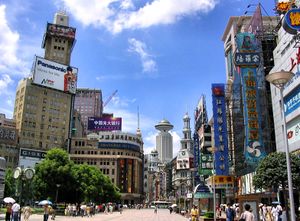
تعتبر شانغهاي هي الأولى بين عشرات المدن الصينية الكبيرة التي يتجاوز عدد سكان كل واحدة منها المليون نسمة.
الدين

التعليم
النقل
المواصلا ت العامة
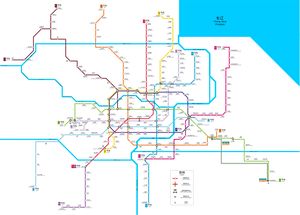
الطرق
السكك الحديدية
الطيران
الهندسة المعمارية
البيئة
الحدائق والمنتجعات
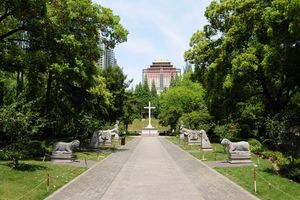
حماية البيئة
الثقافة
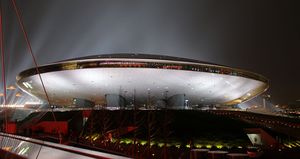
اللغة
المتاحف
السينما
الفنون
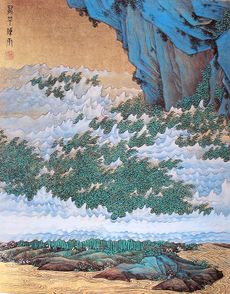
الأزياء
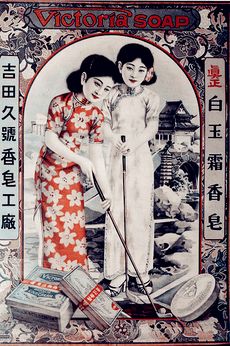
الإعلام
This section requires expansion. (October 2012) |
الرياضة
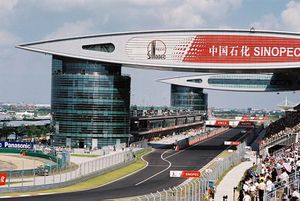
الإقتصاد
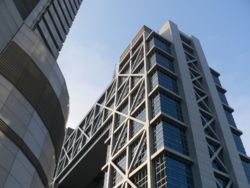
ونظراً لما توافر لها من شروط طبيعية واقتصادية وتاريخية ملائمة للاستقرار والتكاثر، ومن ثم للنمو والازدهار، كالمناخ المعتدل، وكثرة الموارد المائية وخصوبة التربة في السهل الساحلي المحيط بها، أصبحت شنغهاي المدينة الأولى في الصين بفعالياتها الاقتصادية والاجتماعية والسياسية، ففي مينائها يتم اليوم الجزء الأكبر والمهم من حركة التجارة الخارجية للبلاد. وفي أطرافها، إلى جانب مراكز الصناعات الأساسية الثقيلة والتحويلية التي تضم مجموعة متكاملة من مصانع الحديد والصلب والسيارات والدراجات والأجهزة الكهربائية وآلات التصوير والمنسوجات، وخاصة الحريرية، تركز وتطور العديد من الصناعات القديمة التي بهرت الصين بها العالم، كصناعة الورق والحرير والخزف، وللصين بها شهرة تاريخية تعود إلى أكثر من أربعة آلاف سنة. وفي عام 1921 تأسس فيها الحزب الشيوعي الصيني الذي أصبح الحزب الحاكم للبلاد. وفي عام 1997 افتتح فيها المؤتمر الدولي للغرف التجارية الدولية الذي حضره أكثر من 1000 من أصحاب البنوك ورجال الأعمال والاقتصاديين من 74 دولة.
وفي بداية هذا القرن بلغ معدل النمو الاقتصادي في شنغهاي 19%، في الوقت الذي لم يتجاوز المعدل العام للنمو الاقتصادي في الصين 8%، وقد ساعد شنغهاي في وصولها إلى هذه المرتبة المتفوقة بين المدن الصينية، موقعها كأقدم وأهم ميناء، وسعة مجالها الذي تستمد منه الكثير من مقومات تفوقها، وارتفاع عدد سكانها برصيده الكبير من قوة العمل، إذ لم يقلَّ في نهاية القرن الماضي عن 11مليون نسمة، برغم السياسات السكانية الجديدة التي أخذت الصين بتطبيقها، من تحديد للنسل وتشجيع أبناء المدن الكبيرة في المناطق الشرقية القديمة على الانتقال إلى مناطق الاستثمار الجديدة في الداخل. [76]
نظرا لأنها قاعدة صناعية شاملة وأكبر الموانئ في الـصين، تحتل مدينة "شانگهاي" مكانة هامة في اقتصاد البلاد. ومن صناعاتها الرئيسية التعدين وصناعة الآلات والسفن والكيماويات والإلكترونيات والمقاييس والصناعة الخفيفة والغزل والنسيج .. الخ. كما تعرف التجارة والأعمال المصرفية وخدمات النقل البحري حركة كبيرة أيضا.
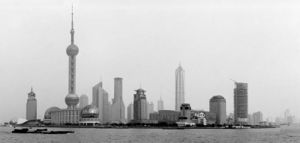
يقع حي "پودونگ" الجديد والذي يبعد عن أحياء مدينة شانغهاي القديمة على الضفة الأخرى من "نهر هوانگبو". وتهدف الحكومة الصينية إلى تنمية حي بودونغ الجديد ثم فتحه على العالم الخارجي، وتتوقع أن يتحول إلى أهم المناطق الإقتصادية على المستوى العالمي والقلب النابض للمدينة. ويتوقع الخبراء أن تصبح مدينة شانغهاي في خلال بضعة سنوات من أكبر مراكز الإقتصاد والمال والتجارة في العالم.
السياسة
 مقالة مفصلة: سياسة شنغهاي
مقالة مفصلة: سياسة شنغهاي
البلدات والمدن الشقيقة
 مقالة مفصلة: قائمة المدن الشقيقة من شنغهاي
مقالة مفصلة: قائمة المدن الشقيقة من شنغهاي
شانغهاي لده العديد من اتفاقيات توأمة المدن مع المدن والمناطق التالية:
 منذ 1973: يوكوهاما, اليابان
منذ 1973: يوكوهاما, اليابان منذ 1974: أوساكا, اليابان
منذ 1974: أوساكا, اليابان منذ 1979: ميلانو, إيطاليا
منذ 1979: ميلانو, إيطاليا منذ 1979: روتردام, هولندا
منذ 1979: روتردام, هولندا منذ 1979: سان فرانسيسكو, كاليفورنيا, الولايات المتحدة
منذ 1979: سان فرانسيسكو, كاليفورنيا, الولايات المتحدة منذ 1980: مقاطعة اوساكا, اليابان
منذ 1980: مقاطعة اوساكا, اليابان منذ 1980: زغرب, كرواتيا
منذ 1980: زغرب, كرواتيا منذ 1982: هامهونگ, كوريا الشمالية
منذ 1982: هامهونگ, كوريا الشمالية منذ 1983: مانيلا, الفلبين
منذ 1983: مانيلا, الفلبين منذ 1984: أنتويرب, بلجيكا
منذ 1984: أنتويرب, بلجيكا منذ 1984: كراتشي, باكستان
منذ 1984: كراتشي, باكستان منذ 1985: شيكاغو, إلينوي, الولايات المتحدة
منذ 1985: شيكاغو, إلينوي, الولايات المتحدة منذ 1985: مونتريال, كندا
منذ 1985: مونتريال, كندا منذ 1985: بيرايوس, اليونان
منذ 1985: بيرايوس, اليونان پولندا منذ 1985: گدانسك, بولندا
پولندا منذ 1985: گدانسك, بولندا منذ 1986: مقاطعة ناگاساكي, اليابان
منذ 1986: مقاطعة ناگاساكي, اليابان منذ 1986: هامبورج, ألمانيا
منذ 1986: هامبورج, ألمانيا منذ 1986: الدار البيضاء, المغرب
منذ 1986: الدار البيضاء, المغرب منذ 1986: گوتنبورگ, السويد
منذ 1986: گوتنبورگ, السويد منذ 1987: مرسيليا, فرنسا
منذ 1987: مرسيليا, فرنسا منذ 1988: ساو پاولو, البرازيل
منذ 1988: ساو پاولو, البرازيل منذ 1988: سان بطرسبرگ, روسيا
منذ 1988: سان بطرسبرگ, روسيا منذ 1989: إسطنبول, تركيا
منذ 1989: إسطنبول, تركيا منذ 1990: مدينة هوشي منه, ڤيتنام
منذ 1990: مدينة هوشي منه, ڤيتنام منذ 1992: الإسكندرية, مصر
منذ 1992: الإسكندرية, مصر منذ 1993: بوزان, كوريا الجنوبية
منذ 1993: بوزان, كوريا الجنوبية منذ 1994: بورت ڤيلا, ڤانواتو
منذ 1994: بورت ڤيلا, ڤانواتو منذ 1994: دونيدن, نيوزيلندا
منذ 1994: دونيدن, نيوزيلندا منذ 1994: حيفا, إسرائيل
منذ 1994: حيفا, إسرائيل منذ 1994: طشقند, أوزبكستان
منذ 1994: طشقند, أوزبكستان منذ 1995: بورتو, البرتغال
منذ 1995: بورتو, البرتغال منذ 1995: عدن, اليمن
منذ 1995: عدن, اليمن منذ 1995: ويندهوك, ناميبيا
منذ 1995: ويندهوك, ناميبيا منذ 1996: لندن, المملكة المتحدة
منذ 1996: لندن, المملكة المتحدة منذ 1996: سانتياجو, كوبا
منذ 1996: سانتياجو, كوبا منذ 1997: روزاريو, الأرجنتين
منذ 1997: روزاريو, الأرجنتين منذ 1998: اسبو, فنلندا
منذ 1998: اسبو, فنلندا منذ 1998: ولاية خاليسكو, المكسيك
منذ 1998: ولاية خاليسكو, المكسيك منذ 1999: ليڤربول, المملكة المتحدة
منذ 1999: ليڤربول, المملكة المتحدة منذ 1999: مابوتو, موزمبيق
منذ 1999: مابوتو, موزمبيق منذ 2000: دبي, الإمارات العربية المتحدة
منذ 2000: دبي, الإمارات العربية المتحدة منذ 2000: تشانگ ماي, تايلاند
منذ 2000: تشانگ ماي, تايلاند منذ 2001: كوازولو ناتال, جنوب أفريقيا
منذ 2001: كوازولو ناتال, جنوب أفريقيا منذ 2001: غواياكيل, إكوادور
منذ 2001: غواياكيل, إكوادور منذ 2001: فالبريزو, تشيلي
منذ 2001: فالبريزو, تشيلي منذ 2001: برشلونة, إسپانيا
منذ 2001: برشلونة, إسپانيا منذ 2001: اوسلو, النرويج
منذ 2001: اوسلو, النرويج منذ 2002: كونستانتا, رومانيا
منذ 2002: كونستانتا, رومانيا منذ 2003: الجزائر, رومانيا
منذ 2003: الجزائر, رومانيا منذ 2003: كولومبو, سريلانكا
منذ 2003: كولومبو, سريلانكا منذ 2003: إقليم آرهوس, الدنمارك
منذ 2003: إقليم آرهوس, الدنمارك منذ 2003: براتيسلافا, سلوفاكيا
منذ 2003: براتيسلافا, سلوفاكيا منذ 2003: أوراكي ديستريكت, نيوزيلندا
منذ 2003: أوراكي ديستريكت, نيوزيلندا منذ 2004: سالزبورج, أستراليا
منذ 2004: سالزبورج, أستراليا منذ 2004: نيقوسيا, قبرص
منذ 2004: نيقوسيا, قبرص منذ 2005: كورك, جمهورية أيرلندا
منذ 2005: كورك, جمهورية أيرلندا منذ 2006: ونستون-سالم, نورث كارولينا. الولايات المتحدة
منذ 2006: ونستون-سالم, نورث كارولينا. الولايات المتحدة منذ 2007: بازل, سويسرا
منذ 2007: بازل, سويسرا منذ 2008: سراييفو, البوسنةوالهرسك
منذ 2008: سراييفو, البوسنةوالهرسك
انظر أيضاً
المصادر
الهوامش
- ^ "Doing Business in China – Survey". Ministry Of Commerce – People's Republic Of China. Retrieved 5 August 2013.
- ^ "Land Area". Basic Facts. Shanghai Municipal People's Government. Retrieved 19 July 2011.
- ^ خطأ استشهاد: وسم
<ref>غير صحيح؛ لا نص تم توفيره للمراجع المسماةwaterresources - ^ خطأ استشهاد: وسم
<ref>غير صحيح؛ لا نص تم توفيره للمراجع المسماةtopo - ^ 2015年上海市国民经济和社会发展统计公报 [Shanghai Economic and Social Development Statistical Bulletin 2015] (in Chinese). Shanghai Bureau of Statistics. 2016-03-01. Retrieved 2016-03-04.
{{cite web}}: CS1 maint: unrecognized language (link) - ^ OECD Urban Policy Reviews: China 2015. OECD. 18 Apr 2015. p. 37. doi:10.1787/9789264230040-en. ISBN 9789264230033.
- ^ خطأ استشهاد: وسم
<ref>غير صحيح؛ لا نص تم توفيره للمراجع المسماةGDP - ^ 《2013中国人类发展报告》 (PDF) (in الصينية). United Nations Development Programme China. 2013. Retrieved 5 January 2014.
- ^ 陸委會網站管理員 (3 September 2010). "ACT GOVERNING RELATIONS BETWEEN PEOPLES OF THE TAIWAN AREA AND THE MAINLAND AREA".
- ^ 于小明. "Shanghai metro area most promising region in China". www.chinadaily.com.cn. Retrieved 2022-03-11.
- ^ 2019 Annual Airport Traffic Report (PDF). United States: Port Authority of New York and New Jersey. 2020.
- ^ "2020 Airport Traffic Report" (PDF) (in الإنجليزية). Port Authority of New York and New Jersey. July 2021. p. 30. Retrieved 26 Sep 2021.
- ^ أ ب Scott Tong (October 2009). "Shanghai: Global financial center? Aspirations and reality, and implications for Hong Kong" (PDF). Hong Kong Journal. Retrieved 17 October 2011.
خطأ استشهاد: وسم
<ref>غير صالح؛ الاسم "1930hub" معرف أكثر من مرة بمحتويات مختلفة. - ^ "Historic Transformation". Shanghai.gov.cn. 27 May 1949. Retrieved 11 December 2011.
- ^ خطأ استشهاد: وسم
<ref>غير صحيح؛ لا نص تم توفيره للمراجع المسماة:4 - ^ "All 30 Universities in Shanghai | Rankings 2022". UniversityGuru (in الإنجليزية). Retrieved 2022-03-20.
- ^ Töre, Özgür. "WTTC reveals the world's best performing tourism cities". ftnnews.com (in الإنجليزية البريطانية). Retrieved 2021-08-07.
- ^ Nagraj, Aarti (2018-03-07). "Revealed: World's top 10 cities with the most five-star hotels". Gulf Business (in الإنجليزية الأمريكية). Retrieved 2021-08-07.
- ^ Danielson, Eric N., Shanghai and the Yangzi Delta, 2004, pp. 8–9.
- ^ National Academy for Educational Research. 教育部重編國語辭典修訂本. dict.revised.moe.edu.tw (in الصينية). Retrieved 29 September 2019.
- ^ 滬瀆詞語解釋 / 滬瀆是什麽意思. chinesewords.org (in الصينية التقليدية). Archived from the original on 29 September 2019. Retrieved 29 September 2019.
- ^ أ ب "申","沪"的由来 (in الصينية المبسطة). Shanghai Municipal People's Government. Archived from the original on 16 April 2011. Retrieved 11 January 2011.
- ^ 中华人民共和国机动车号牌 [License plate of motor vehicle of the People's Republic of China] (PDF) (in Chinese (China)). Ministry of State Security of the People's Republic of China. 28 September 2007. p. 14. Archived (PDF) from the original on 3 May 2018. Retrieved 29 September 2019.
- ^ 华亭宾馆和零的突破. Xinmin Evening News (in Chinese (China)). 5 September 2013. Archived from the original on 5 September 2013. Retrieved 12 January 2014.
- ^ "'Modu' Shanghai but why people call it 'Modu'?". shanghaifact.weebly.com. Archived from the original on 2 October 2019. Retrieved 2 October 2019.
- ^ Lippet, Seiji (2002). Topographies of Japanese Modernism. Columbia University Press. p. 84. ISBN 0231500688.
- ^ Moraski, Brittney (20 July 2011). "Shanghai brings a touch of home". Daily Press. Archived from the original on 28 September 2011. Retrieved 29 July 2011.
- ^ "Shanghai: Pearl of the Orient". Meetingsfocus.com. 7 April 2013. Archived from the original on 30 August 2013. Retrieved 4 July 2013.
- ^ "Lodi News-Sentinel - Google News Archive Search". news.google.com. Retrieved 2021-03-13.
- ^ "The Shanghainese of 6000 Years Ago – the Majiabang Culture". Shanghai Qingpu Museum. Archived from the original on 4 January 2017. Retrieved 24 November 2014.
- ^ أ ب "Ancient History". cultural-china.com. Archived from the original on 16 June 2013. Retrieved 26 April 2014.
- ^ "申"、"沪"的由来. shanghai.gov.cn (in Chinese (China)). Archived from the original on 1 October 2019. Retrieved 1 October 2019.
- ^ 上海青浦青龙镇遗址 [Ruins of Qinglong Town in Qingpu, Shanghai]. Institute of Archaeology, Chinese Academy of Social Sciences. 24 March 2017. Archived from the original on 31 August 2017. Retrieved 16 July 2017.
- ^ 青龙镇考古:上海首个贸易港,为何人称"小杭州". Thepaper.cn. 10 December 2016. Archived from the original on 11 September 2017. Retrieved 16 July 2017.
- ^ Danielson, Eric N., Shanghai and the Yangzi Delta, 2004, p.9.
- ^ Danielson, Eric N., Shanghai and the Yangzi Delta, 2004, p.9, pp.11–12, p.34.
- ^ أ ب Danielson, Eric N., Shanghai and the Yangzi Delta, 2004, p.10.
- ^ Danielson, Eric N., Shanghai and the Yangtze Delta, 2004, pp.10–11.
- ^ Rait, Robert S. (1903). The Life and Campaigns of Hugh, First Viscount Gough, Field-Marshal Archived 7 أبريل 2016 at the Wayback Machine. Volume 1. p. 267–268
- ^ "The Opium war (or how Hong Kong began)". South China Morning Post. Archived from the original on 6 May 2016. Retrieved 2 May 2016.
- ^ أ ب ت ث ج ح 上海通志 总述 [General History of Shanghai – Overview] (in الصينية). Office of Shanghai Chronicles. 1 July 2008. Archived from the original on 25 November 2018. Retrieved 2 October 2019.
- ^ Scarne, John. Twelve years in China Archived 28 يوليو 2014 at the Wayback Machine. Edinburgh: Constable, 1860: 187–209.
- ^ Williams, S. Wells. The Middle Kingdom: A Survey of the Geography, Government, Literature, Social Life, Arts, and History of the Chinese Empire and its Inhabitants, Vol. 1, p. 107. Scribner (New York), 1904.
- ^ "Shanghai International Settlement". Flag of the World. Archived from the original on 14 May 2019. Retrieved 2 October 2019.
- ^ Gordon Cumming, C. F. (Constance Frederica), "The inventor of the numeral-type for China by the use of which illiterate Chinese both blind and sighted can very quickly be taught to read and write fluently", London : Downey, 1899, archive.org Archived 29 يوليو 2014 at the Wayback Machine
- ^ Ku, Hung-Ting [1979] (1979). Urban Mass Movement: The May Thirtieth Movement in Shanghai. Modern Asian Studies, Vol.13, No.2. pp.197–216
- ^ Cathal J. Nolan (2002). The Greenwood Encyclopedia of International Relations: S-Z. Greenwood Publishing Group. p. 1509. ISBN 978-0-313-32383-6.
- ^ أ ب 第一卷 建置沿革 (in Chinese (China)). Office of Shanghai Chronicles. 2 July 2008. Archived from the original on 25 October 2018. Retrieved 2 October 2019.
- ^ Danielson, Eric N., Shanghai and the Yangzi Delta, 2004, p. 34.
- ^ Shanghai: Paradise for adventurers. CBC – TV. Legendary Sin Cities. Archived 1 أبريل 2009 at the Wayback Machine
- ^ "Shanghai's White Russians (1937)". SHANGHAI SOJOURNS. 21 August 2018. Archived from the original on 24 March 2019. Retrieved 2 October 2019.
- ^ "All About Shanghai. Chapter 4 – Population Archived 20 مايو 2010 at the Wayback Machine". Tales of Old Shanghai.
- ^ "Shanghai Sanctuary Archived 14 أغسطس 2009 at the Wayback Machine". Time. 31 July 2008.
- ^ Board of Directors of the Oriental Library, A Description of the Oriental Library Before and After the Destruction by Japanese on February 1, 1932, Shanghai: Mercury Press, 1932, p. 5. Retrieved 15 August 2020.
- ^ 图说上海一二八事变----战争罪行. archives.sh.cn (in الصينية). Archived from the original on 4 February 2018. Retrieved 3 October 2019.
- ^ Nicole Huang, "Introduction," in Eileen Chang, Written on Water, translated by Andrew F. Jones (New York: Columbia University Press, 2005), XI
- ^ "149 comfort women houses discovered in Shanghai". Xinhua News Agency. 16 June 2005. Archived from the original on 1 December 2008.
- ^ Griffiths, James (21 December 2013). "Shanghai's Forgotten Jewish Past". The Atlantic. Retrieved 30 June 2021.
- ^ "Changhai est tombé sans combat". Le Monde (in الفرنسية). 27 May 1949. Archived from the original on 28 September 2011.
- ^ Thomas, Thompson (1979). China's Nationalization of Foreign Firms: The Politics of Hostage Capitalism, 1949–1957 (PDF). University of Maryland School of Law. p. 16. ISBN 0-942182-26-X. Archived from the original (PDF) on 23 February 2019. Retrieved 27 November 2019.
- ^ أ ب 上海地名志 总述 (in Chinese (China)). Office of Shanghai Chronicles. 3 August 2004. Retrieved 3 October 2019.
- ^ Pacione, Michael (4 December 2014). Problems and Planning in Third World Cities. Routledge Revivals. ISBN 9780415705936.
- ^ Shanghai: transformation and modernization under China's open policy. By Yue-man Yeung, Sung Yun-wing, page 66, Chinese University Press, 1996
- ^ McGregor, Richard (31 July 2012). The Party: The Secret World of China's Communist Rulers. Harper Perennial; Reprint. ISBN 9780061708763.
- ^ 浦东,改革开放尽显"上海风度". Xinhua News (in Chinese (China)). 17 September 2018. Archived from the original on 29 September 2019. Retrieved 29 September 2019.
- ^ "GaWC - The World According to GaWC 2020". www.lboro.ac.uk. Retrieved 2020-09-27.
- ^ 李强 [Li Qiang]. People's Daily (in الصينية). Archived from the original on 18 January 2017. Retrieved 16 January 2017.
- ^ 蒋卓庆当选上海市人大常委会主任. Xinhua News (in Chinese (China)). 20 January 2020. Retrieved 24 March 2020.
- ^ 龚正正式出任上海代市长 (in Chinese (China)). Lianhe Zaobao. 24 March 2020. Retrieved 24 March 2020.
- ^ خطأ استشهاد: وسم
<ref>غير صحيح؛ لا نص تم توفيره للمراجع المسماةDong Yunhu - ^ 国家统计局统计用区划代码
- ^ 《保定经济统计年鉴2011》
- ^ shi, Guo wu yuan ren kou pu cha ban gong; council, Guo jia tong ji ju ren kou he jiu ye tong ji si bian = Tabulation on the 2010 population census of the people's republic of China by township / compiled by Population census office under the state; population, Department of; statistics, employment statistics national bureau of (2012). Zhongguo 2010 nian ren kou pu cha fen xiang, zhen, jie dao zi liao (Di 1 ban. ed.). Beijing Shi: Zhongguo tong ji chu ban she. ISBN 978-7-5037-6660-2.
{{cite book}}: CS1 maint: numeric names: authors list (link) - ^ 《中国民政统计年鉴2012》
- ^ "Basic Statistics on National Population Census". Shanghai Bureau of Statistics.
- ^ محمود رمزي. "شنغهاي". الموسوعة العربية. Retrieved 2013-01-16.
قائمة المراجع
- Danielson, Eric N. (2010). Discover Shanghai. Singapore: Marshall Cavendish.
- Danielson, Eric N. (2004). Shanghai and the Yangzi Delta. Singapore: Marshall Cavendish/Times Editions. ISBN 981–232–597–2.
{{cite book}}: Check|isbn=value: invalid character (help) - Elvin, Mark (1977). "Market Towns and Waterways: The County of Shanghai from 1480 to 1910," in The City in Late Imperial China, ed. by G. William Skinner. Stanford: Stanford University Press.
- Johnson, Linda Cooke (1995). Shanghai: From Market Town to Treaty Port. Stanford: Stanford University Press.
- Johnson, Linda Cooke (1993). Cities of Jiangnan in Late Imperial China. Albany: State University of New York (SUNY). ISBN 0-7914-1424-8.
- Horesh, Niv (2009). Shanghai's Bund and Beyond. New Haven: Yale University Press.
- Erh,Deke and Johnston, Tess (2007). Shanghai Art Deco. Hong Kong: Old China Hand Press.
{{cite book}}: CS1 maint: multiple names: authors list (link)
وصلات خارجية
شانغهاي كما تكتب باللغة الصينية
خطأ استشهاد: وسوم <ref> موجودة لمجموعة اسمها "lower-alpha"، ولكن لم يتم العثور على وسم <references group="lower-alpha"/>
- CS1 uses الصينية-language script (zh)
- CS1 الصينية-language sources (zh)
- CS1 الإنجليزية البريطانية-language sources (en-gb)
- CS1 الإنجليزية الأمريكية-language sources (en-us)
- CS1 الصينية التقليدية-language sources (zh-hant)
- CS1 الصينية المبسطة-language sources (zh-hans)
- CS1 Chinese (China)-language sources (zh-cn)
- CS1 الفرنسية-language sources (fr)
- CS1 maint: numeric names: authors list
- Short description is different from Wikidata
- Articles containing صينية-language text
- Pages using multiple image with auto scaled images
- مقالات تحتوي نصوصاً باللغة الصينية المبسطة
- مقالات تحتوي نصوصاً باللغة الصينية التقليدية
- مقالات فيها عبارات متقادمة منذ 2021
- جميع المقالات التي فيها عبارات متقادمة
- مقالات تحتوي نصوصاً باللغة الصينية
- Articles with unsourced statements
- Articles with hatnote templates targeting a nonexistent page
- Articles to be expanded from October 2012
- All articles to be expanded
- CS1 errors: ISBN
- Pages using adjacent communities with unknown parameters
- شانغهاي
- مدن مستقلة
- مناطق العاصمة من الصين
- بلديات جمهورية الصين الشعبية
- أماكن مأهولة في الصين الساحلية
- أماكن مأهولة التي أنشئت في القرن 10th
- مدن وموانئ في الصين
- معاهدة نانجينگ
- دلتا نهر اليانگتسى
- مدن صينية
- تقسيمات الصين
- أكبر مدن العالم كثافة سكانية
- شرق الصين
- بلديات الصين

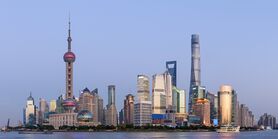







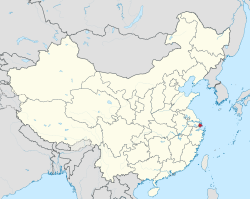

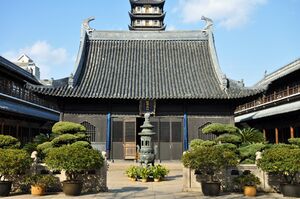
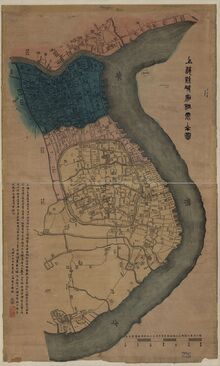
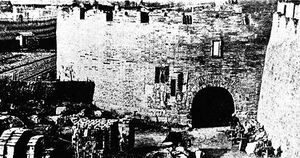
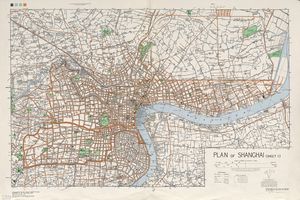
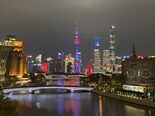

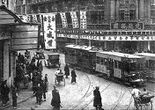

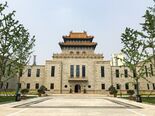

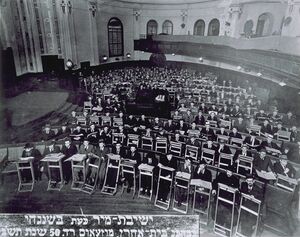
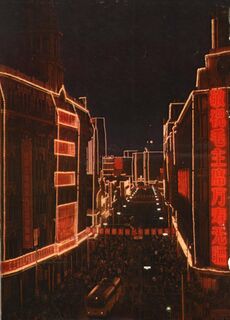
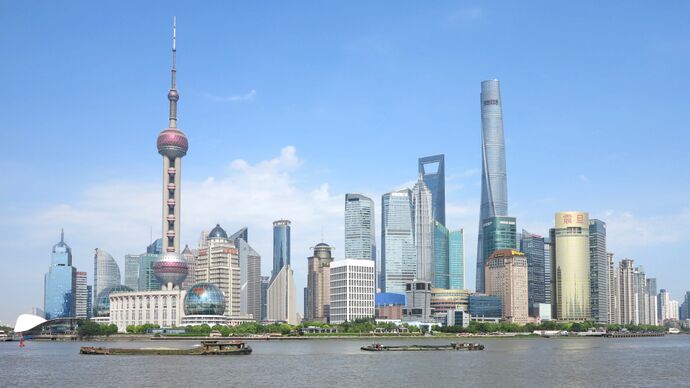
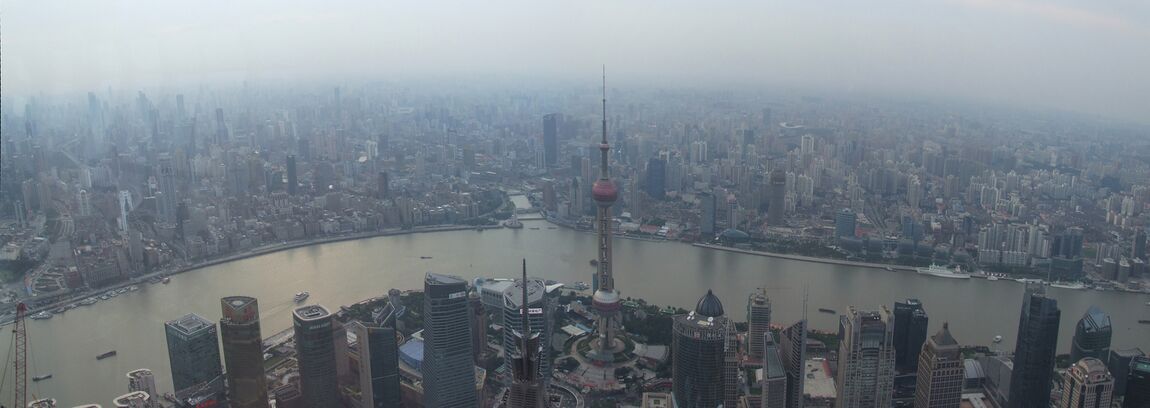

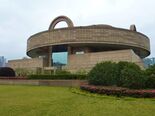
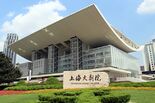
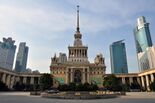
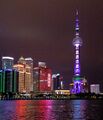

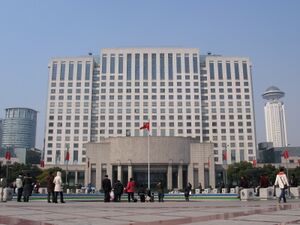

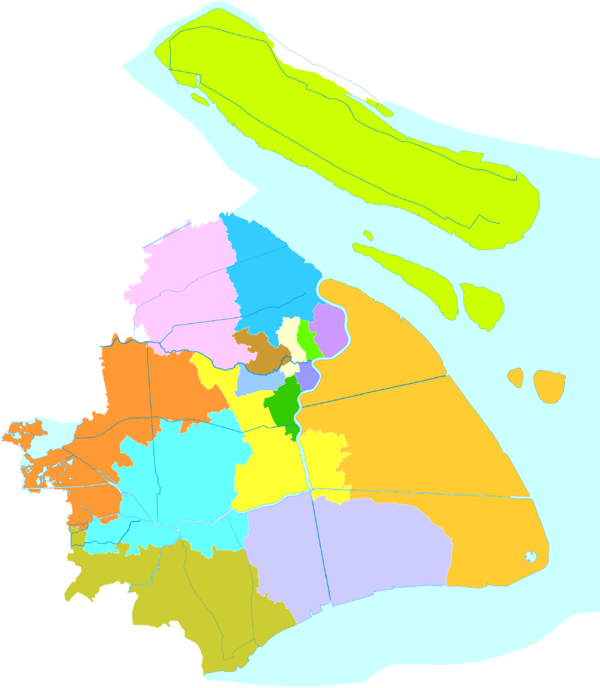


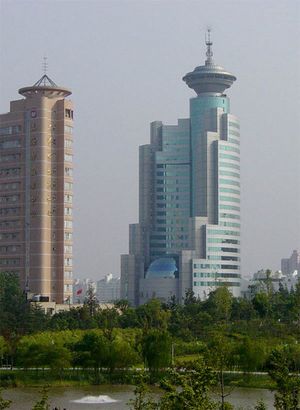
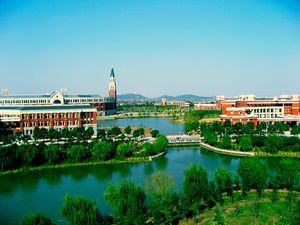
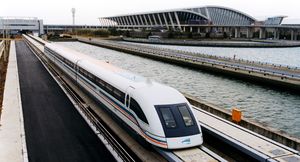
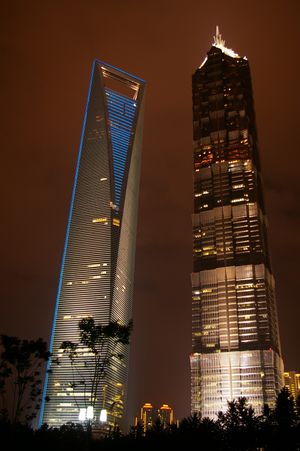
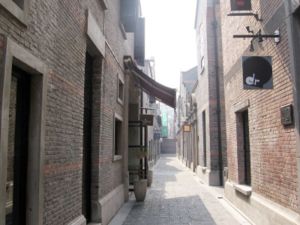
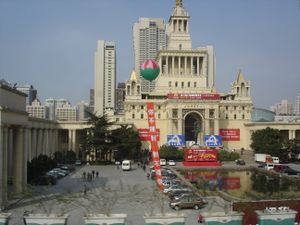
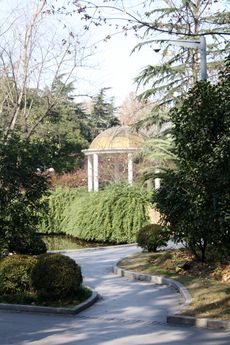
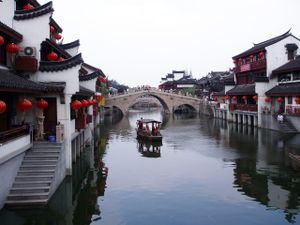
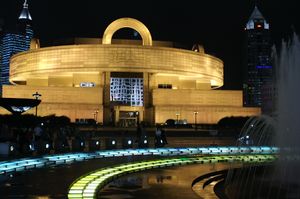
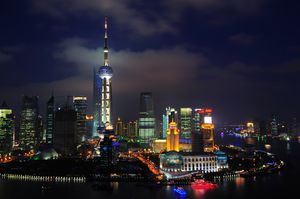
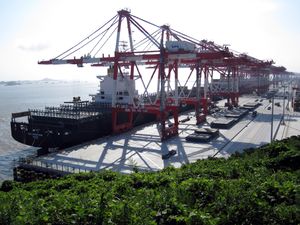









![This terrified baby was the only person left alive in Shanghai's South Station after a Japanese bombing run during the Battle of Shanghai in August 1937.[6]](/w/images/1/10/BattleOfShanghaiBaby.gif)


















